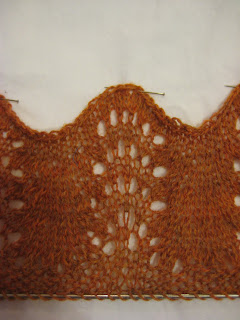This was originally posted in a Facebook group, I felt that it could use some wider exposure. I have tweaked it a bit from the original post’s text.
I thought it could be informative discuss the
real costs of scholarly research. I occasionally see requests in Facebook
groups and elsewhere asking researchers to hand over large quantities of
research. It’s not that I, or any other researcher I know, don’t want to share.
For most of us sharing is part of our passion. Sometimes though it seems that
some feel our intellectual property has to be community property. For free.
That information comes at a very real cost to the researcher.
Trips to libraries and museums cost in transportation and often hotels. We all
know how quickly travel costs add up. Some museums and libraries charge for
researchers to take pictures, most charge for their staff to take pictures or
photocopies. Quality books (new publications) don’t come cheap, period books
come at even higher prices. Collecting extant items for research comes with
significant costs. Sure, some cdv’s can be had for $1.99 (fewer and fewer
though) but a good condition dress can easily reach well over $500, and that
would be a common style with unusual ones easily being higher. All of these
come with storage costs. Even “book”, along with online and other electronic
information, research has costs – bigger computer storage for those huge files,
backup service or hardware costs, software for organization and tracking, etc. Tools
for examining items – microscopes, magnifying glasses, linen testers, etc., do
not come cheaply. Collecting objects requires proper storage containers, space,
environment control, and software for tracking for the larger collectors. For
those who are gracious enough to exhibit their collections add in some significant
costs for dress dummies or other supports, hoops, labels, etc. Many researchers
belong to professional organizations for access to conferences, resources and
networking. Those memberships also cost money.
We can’t forget the cost of researchers’ time. Many people spend
uncountable hours, reading, searching, organizing, discussing with other
researchers, reaching out to staff at museums and libraries, and traveling,
Even once all of that is done, consider the time spent to answer some
questions. If someone posts or emails a multiple paragraph answer, chock full
of site and links, it may well have taken half an hour or more to think
through, type out, dig out the cites, and track down the links.
Again, it’s not that I don’t want to share, or don’t think
researchers should share. I do think though that people need to understand what
goes into that sharing. There needs to be some understanding of the financial
and time commitment that goes into those answers. I think it’s important for
people to understand why classes taught by someone who does good research costs
more than a few bucks. Why when someone is teaching a class they aren’t also
going to just hand over all of the research on that topic for free to another
person. Why sometimes we’ll balk at handing over huge amounts of information to
people we know are going to use it for commercial profit instead of doing the
research themselves.
If we try to guide you to doing research yourself it’s not that we don’t want
to help you, it’s that we are trying to help you to help yourself.
Does a little trip really cost that
much?
Right before I wrote the original post I had I spent two days in Winterthur’s
library working on research for an upcoming symposium talk and an ongoing
research project. Winterthur isn’t all that far from me, it’s an easy drive. I
travel pretty cheap, searching for hotel deals and eat in cheap restaurants (or
grab yogurt at a grocery store, or forget to eat a meal). Hotel costs for two
night were just over $230. At mileage rates at that point my travel was just
about $200 plus nearly $30 in tolls. Travel time, round trip, was about 10
hours. In two days of eating lunch and dinner out I spend about when I spend
for a week’s worth of groceries (I’m not going anyplace expensive, I just eat
really cheaply at home). Winterthur currently lets researchers take pictures
for free, last time I was there they charged. I spent @ 2 hours total digging
through their catalog, making notes, and prioritizing what I wanted to look at
before going. I spent a little over 12 hours in the library over two days. I
spent at least another 5 hours in the evening loading pictures onto my laptop,
checking notes to make sure they made sense while things were fresh in my mind,
and doing some research to help explain some new questions. Financial outlay? About
$460. Cost of my labor? 19 hours x $30 an hour = $570 (that’s a low estimate
for trained skilled labor, a professional genealogist doing similar work might
be as much as $75). Total = $1030. 2 days, one very small piece of two large projects.
Intellectual property comes at a cost and has a value.
What can you do to be a good consumer
of other’s research?
Don’t insist that someone hand over more, more, more.
Don’t reshare their information without connecting it to the researcher by name.
Don’t make copies of workshop handouts to share with friends. And, don’t be the
friend asking someone to make copies.
Don’t rely on others’ work for money making endeavors. Don’t buy one pattern
and use it to stock your online store. Don’t accept a commission for something
you don’t have enough background to make and expect someone else to give you
all the information you need, for free while you make money from it.
Do some research yourself. Be one of the people adding to our body of
knowledge.

